Stream Slope as an Indicator for Drowning Potential at Low Head Dams
Abstract
1. Introduction
1.1. Purpose of the Work
1.1.1. Background
1.1.2. Proposed Theory
1.2. Literature Review
1.2.1. The Danger of Low Head Dams
1.2.2. Other Methods to Characterize Hazards at Low Head Dams
1.2.3. National Hydrography Dataset (NHD) plus High Resolution and Stream Slope
1.3. Gap in the Research
2. Materials and Methods
2.1. Materials
2.1.1. Fatalities at Low Head Dams
2.1.2. Low Head Dam Inventory
2.1.3. Stream Slope
2.2. Methods
2.2.1. National Stream Slope Map
2.2.2. Attaching Slope to Low Head Dams
2.2.3. Statistical Testing
3. Results
3.1. Distribution of Stream Slopes at Low Head Dams
3.1.1. All Sample States (CO, ID, IN, MD, NM, NC, and PA)
3.1.2. Pennsylvania
3.2. Statisitical Testing
Mann–Whitney U Test Results and Sample Size
4. Discussion and Recommendations
Author Contributions
Funding
Informed Consent Statement
Data Availability Statement
Acknowledgments
Conflicts of Interest
Appendix A
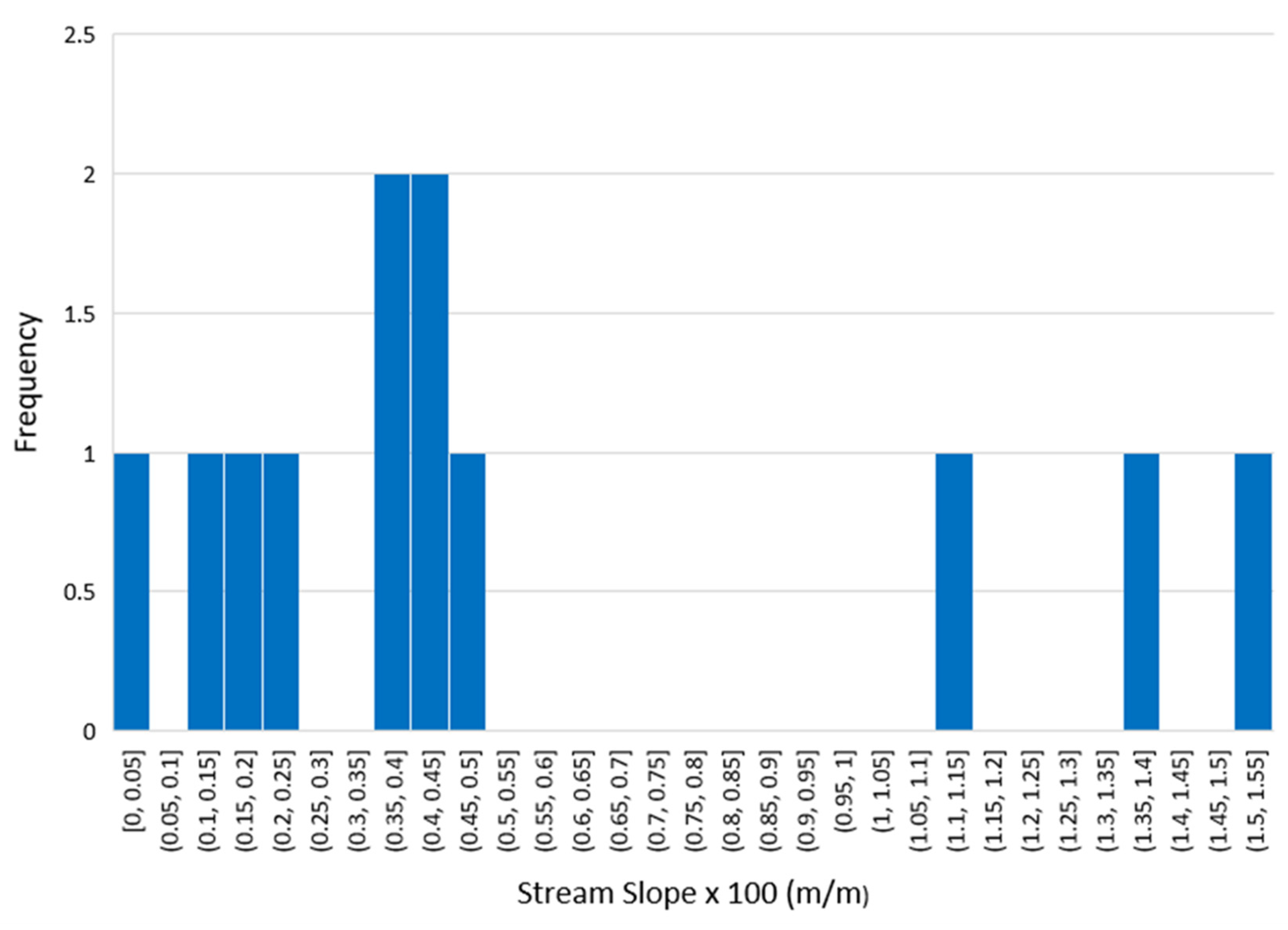
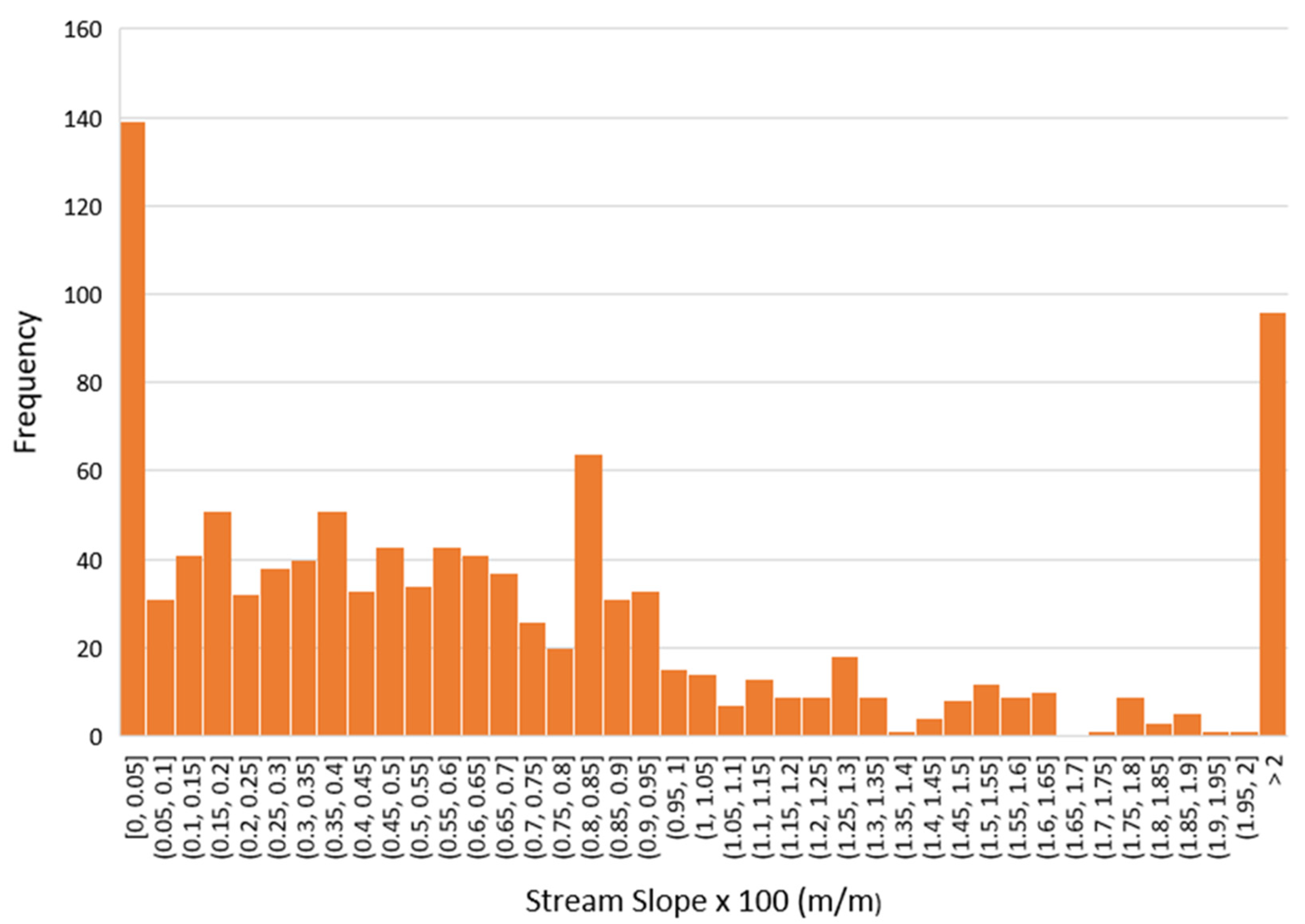
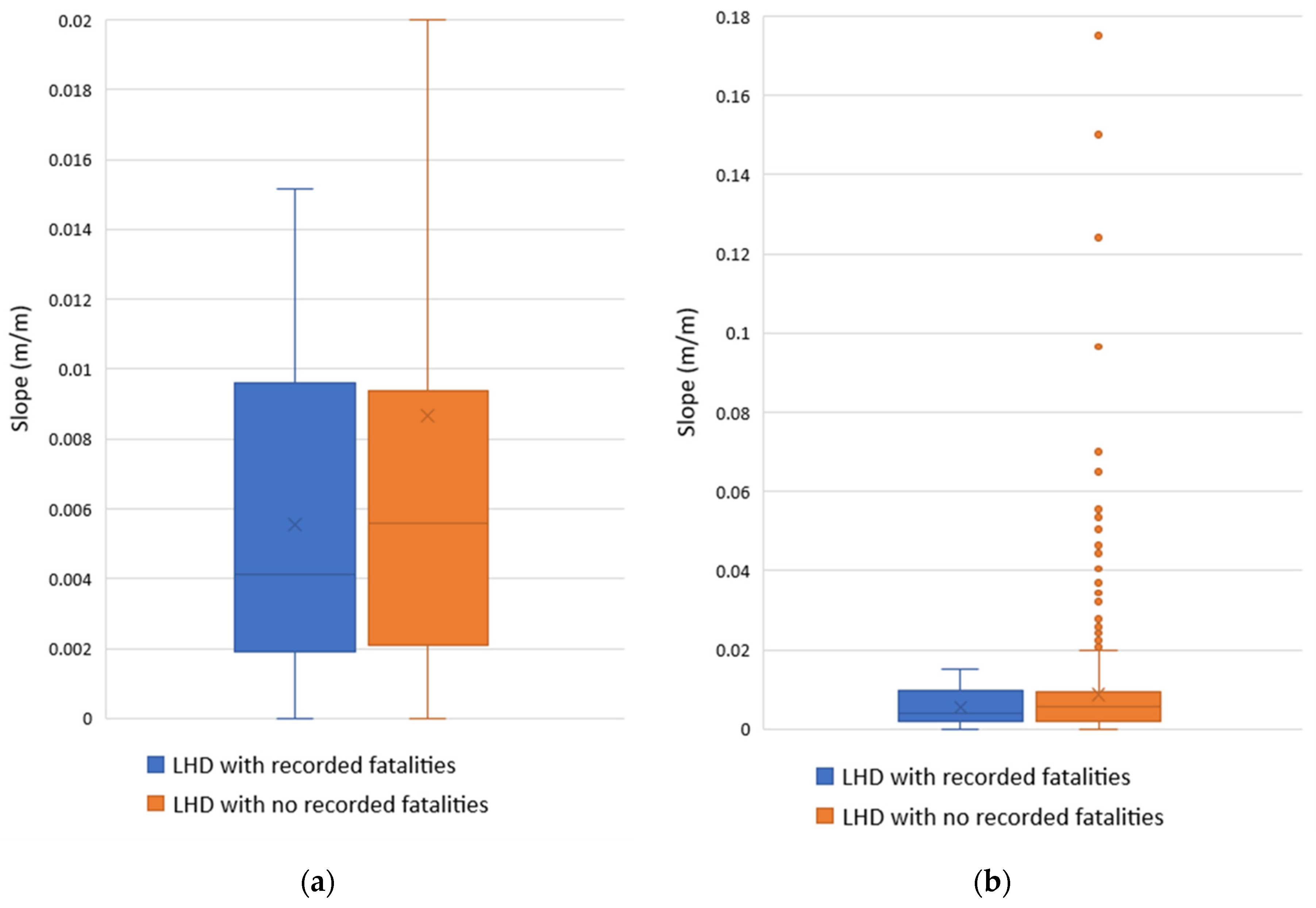
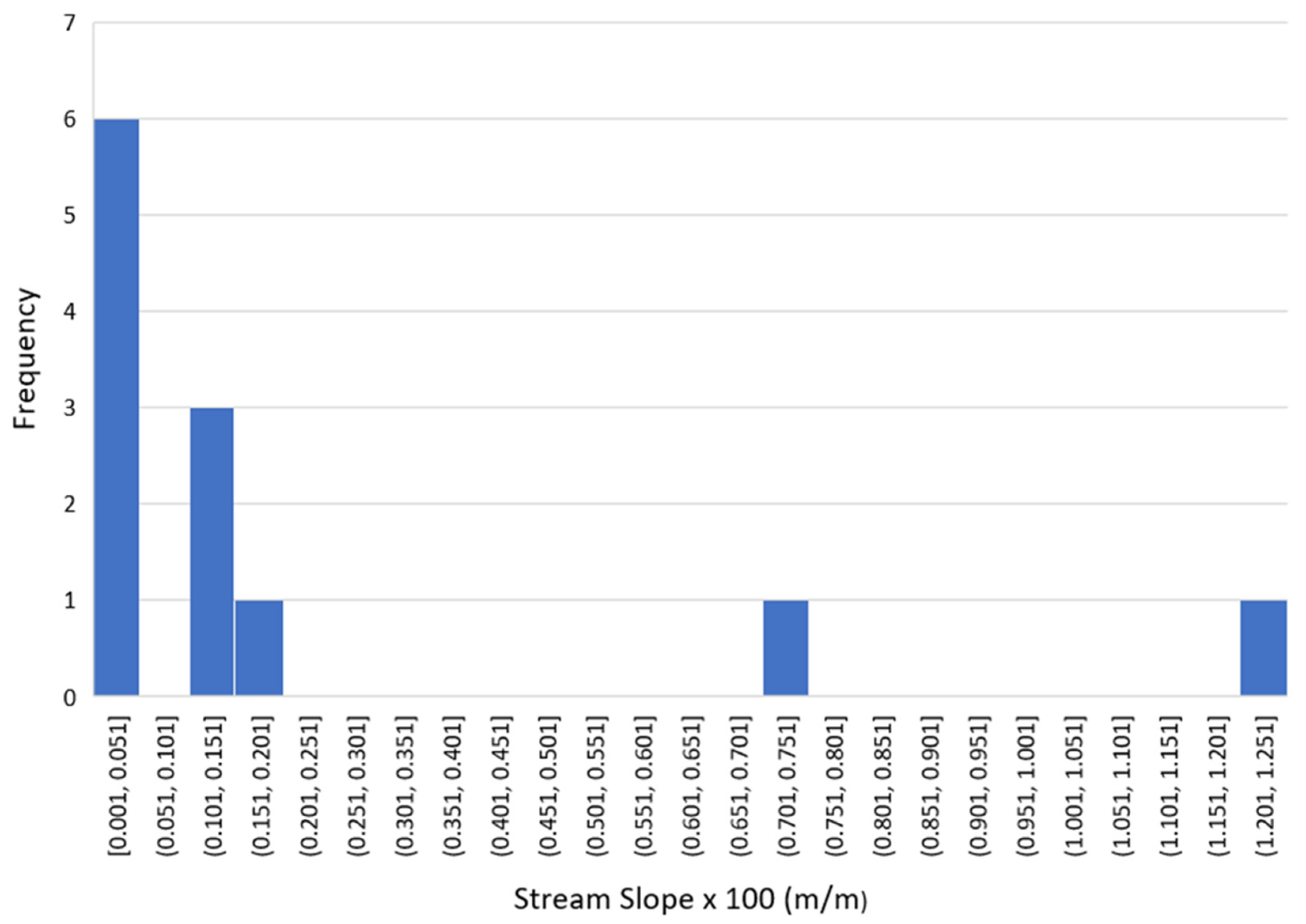
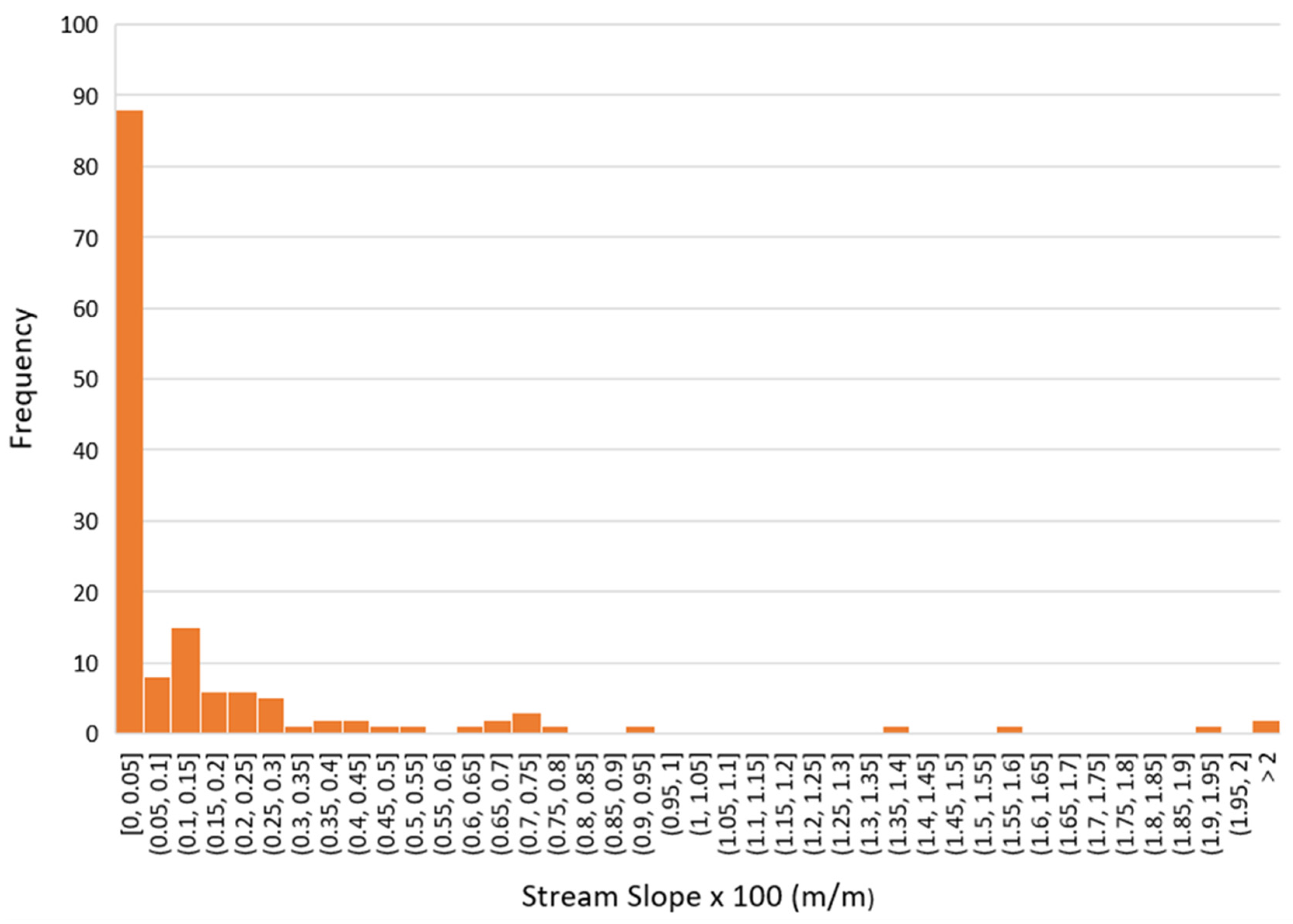
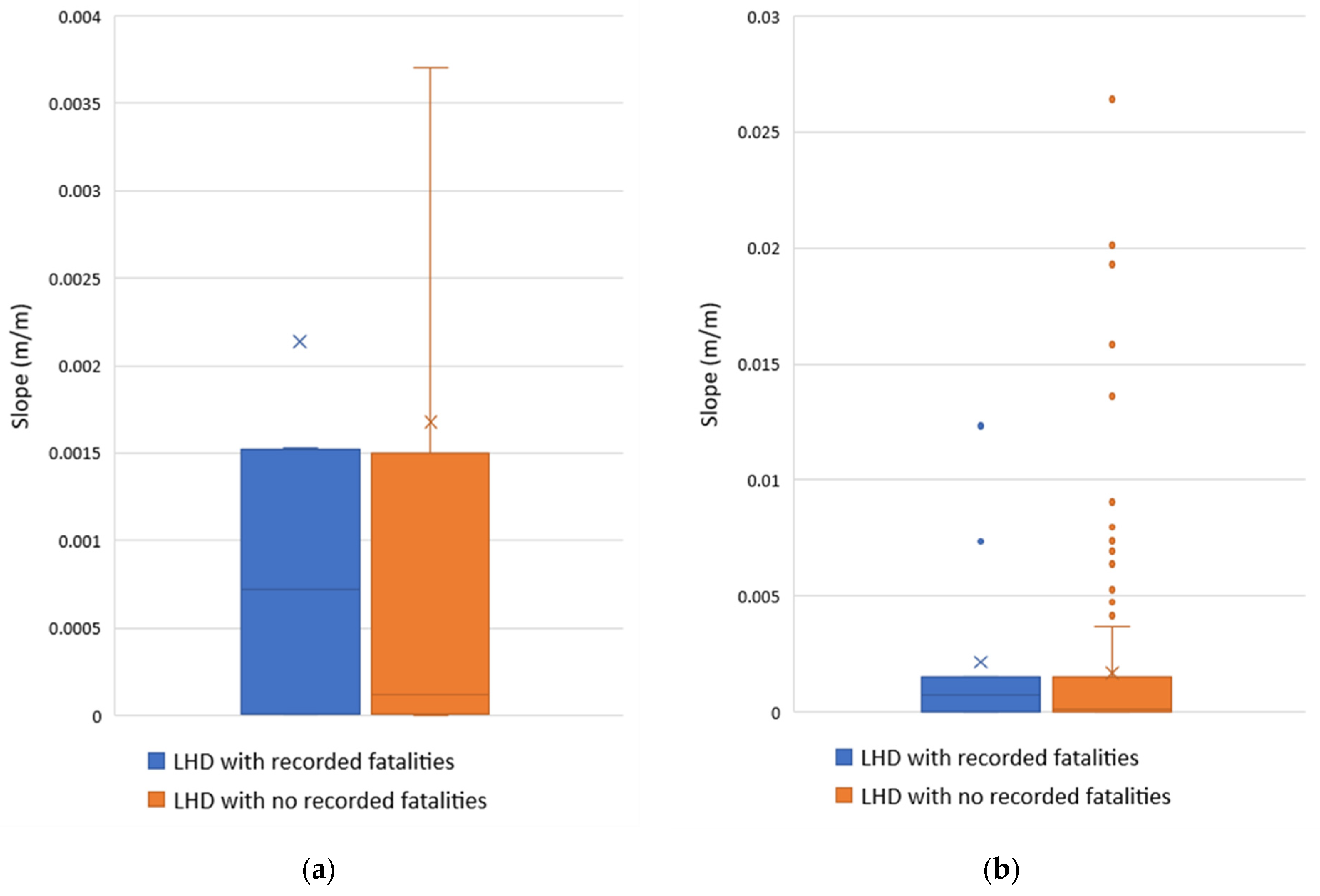
References
- Hotchkiss, R.H.; Johnson, M.; Crookston, B. Creating a National Inventory of Low-Head Dams; Association of State Dam Safety Officials: Lexington, KY, USA, 2020; Volume 1, pp. 380–387. [Google Scholar]
- Landers, J. Engineers Work to Reduce Drowning Deaths at Low-Head Dams. Available online: https://www.asce.org/publications-and-news/civil-engineering-source/civil-engineering-magazine/article/2021/01/engineers-work-to-reduce-drowning-deaths-at-low-head-dams (accessed on 4 November 2022).
- Tschantz, B.A. What We Know (and Don’t Know) About Low-Head Dams. J. Dam Saf. 2014, 12, 37–45. [Google Scholar]
- Tschantz, B.A.; Wright, K.R. Hidden Dangers and Public Safety at Low-Head Dams. J. Dam Saf. 2011, 9, 8–17. [Google Scholar]
- Wahl, T.L.; Svoboda, C.D. Defining Dangerous Flow Ranges of Low-Head Dams. In Proceedings of the World Environmental and Water Resources Congress 2022: Adaptive Planning and Design in an Age of Risk and Uncertainty, Atlanta, Georgia, 5–8 June 2022; American Society of Civil Engineers (ASCE): Atlanta, GA, USA, 2022; pp. 273–281. [Google Scholar]
- McGhin, R.F.; Hotchkiss, R.H.; Kern, E. Submerged Hydraulic Jump Remediation at Low-Head Dams: Partial Width Deflector Design. J. Hydraul. Eng. 2018, 144, 04018074. [Google Scholar] [CrossRef]
- Wright, K.R.; Kelly, J.M.; Allender, W.E. Low-Head Dam Hydraulic Turbulence Hazards; Association of State Dam Safety Officials: Red Lodge, MT, USA, 1995. [Google Scholar]
- Kern, E.W. Fatal Currents—Low Head Dam Presentation. Available online: https://krcproject.groups.et.byu.net/ (accessed on 4 November 2022).
- Leutheusser, H.J.; Fan, J.J. Backward Flow Velocities of Submerged Hydraulic Jumps. J. Hydraul. Eng. 2001, 127, 514–517. [Google Scholar] [CrossRef]
- Devadason, B.I.; Schweiger, P. Decoding the Drowning Machines: Using CFD Modeling to Predict and Design Solutions to Remediate the Dangerous Hydraulic Roller at Low Head Dams. J. Dam Saf. 2020, 17, 20–31. [Google Scholar]
- Olsen, R.J.; Johnson, M.C.; Barfuss, S.L. Risk of Entrapment at Low-Head Dams. J. Hydraul. Eng. 2013, 139, 675–678. [Google Scholar] [CrossRef]
- Moore, R.B.; McKay, L.D.; Rea, A.H.; Bondelid, T.R.; Price, C.V.; Dewald, T.G.; Johnston, C.M. User’s Guide for the National Hydrography Dataset Plus (NHDPlus) High Resolution; Open-File Report; US Geological Survey: Reston, VA, USA, 2019; p. 80.
- Tavakoly, A.A.; Snow, A.D.; David, C.H.; Follum, M.L.; Maidment, D.R.; Yang, Z.-L. Continental-Scale River Flow Modeling of the Mississippi River Basin Using High-Resolution NHDPlus Dataset. JAWRA J. Am. Water Resour. Assoc. 2017, 53, 258–279. [Google Scholar] [CrossRef]
- Cohen, S.; Wan, T.; Islam, M.T.; Syvitski, J.P.M. Global River Slope: A New Geospatial Dataset and Global-Scale Analysis. J. Hydrol. 2018, 563, 1057–1067. [Google Scholar] [CrossRef]
- Johnson, J.M. National Hydrologic Geospatial Fabric (Hydrofabric) for the Next Generation (NextGen) Hydrologic Modeling Framework, Hydroshare. Available online: https://www.hydroshare.org/resource/129787b468aa4d55ace7b124ed27dbde/ (accessed on 28 December 2022).
- Kern, E.W.; Hotchkiss, R.H.; Ames, D.P. Introducing a Low-Head Dam Fatality Database and Internet Information Portal. JAWRA J. Am. Water Resour. Assoc. 2015, 51, 1453–1459. [Google Scholar] [CrossRef]
- Sheskin, D.J. Parametric and Nonparametric Statistical Procedures; Chapman & Hall: Boca Raton, FL, USA, 2000. [Google Scholar]
- Virtanen, P.; Gommers, R.; Oliphant, T.E.; Haberland, M.; Reddy, T.; Cournapeau, D.; Burovski, E.; Peterson, P.; Weckesser, W.; Bright, J.; et al. SciPy 1.0: Fundamental Algorithms for Scientific Computing in Python. Nat. Methods 2020, 17, 261–272. [Google Scholar] [CrossRef] [PubMed]
- Arcement, G.J.; Schneider, V.R. Guide for Selecting Manning’s Roughness Coefficients for Natural Channels and Flood Plains; Water Supply Paper; United States Geological Survey: Reston, VA, USA, 1989.
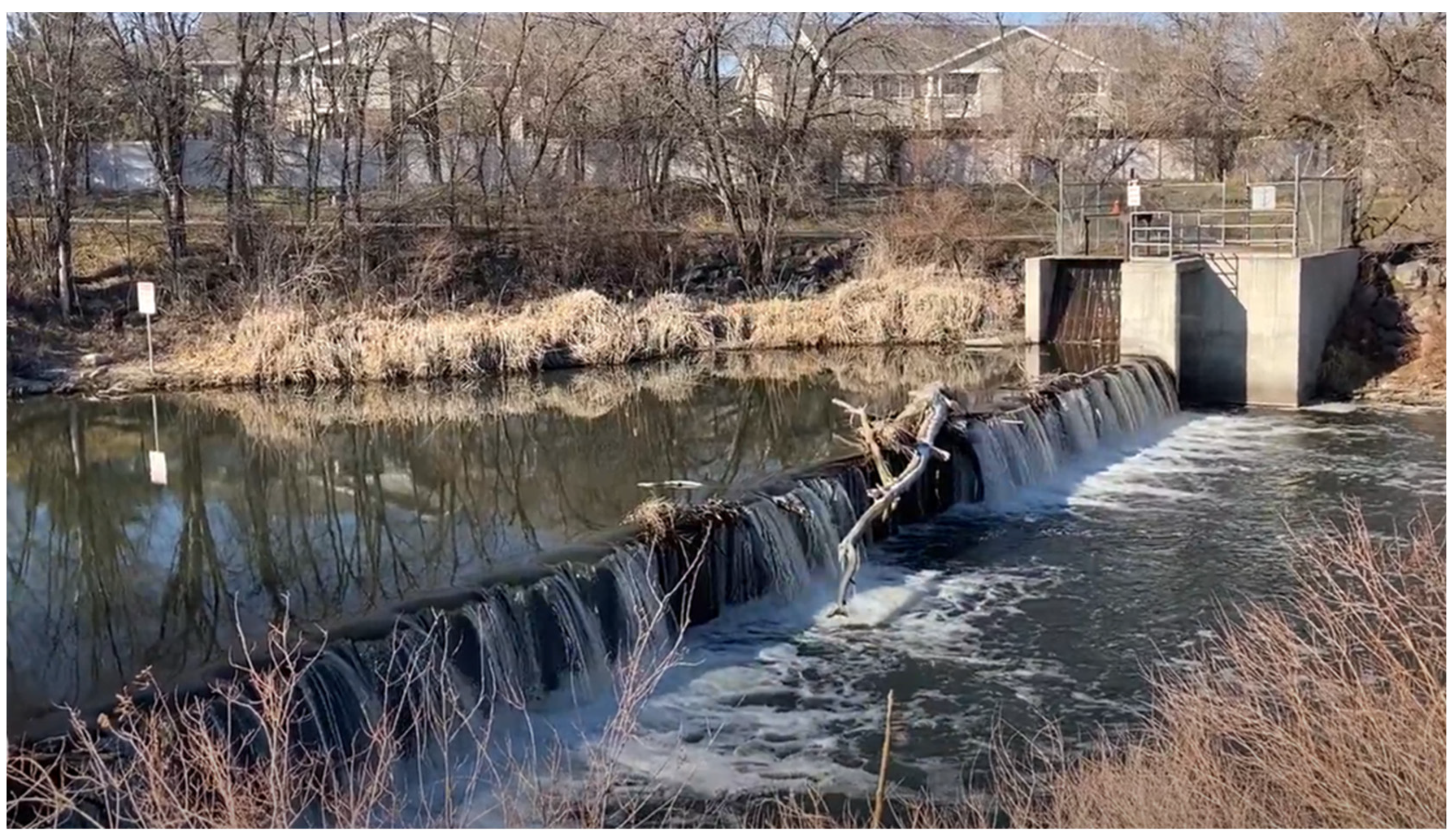
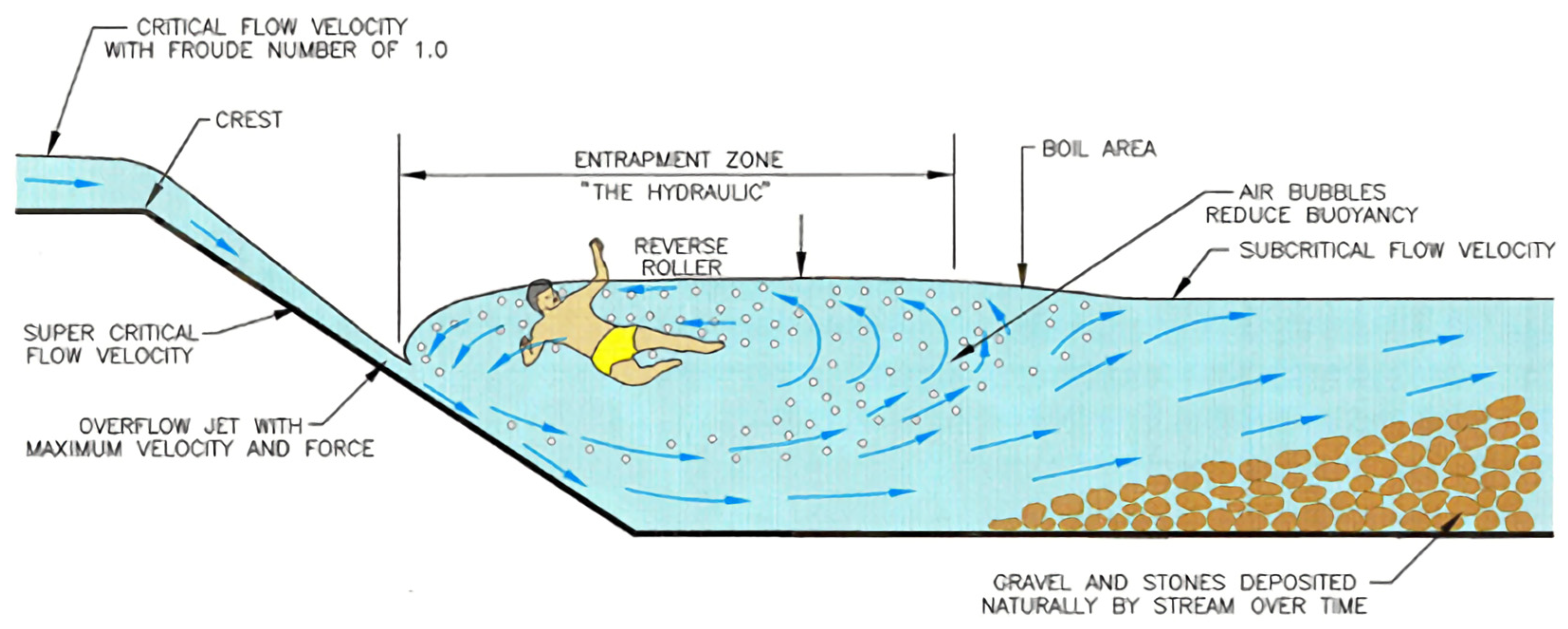
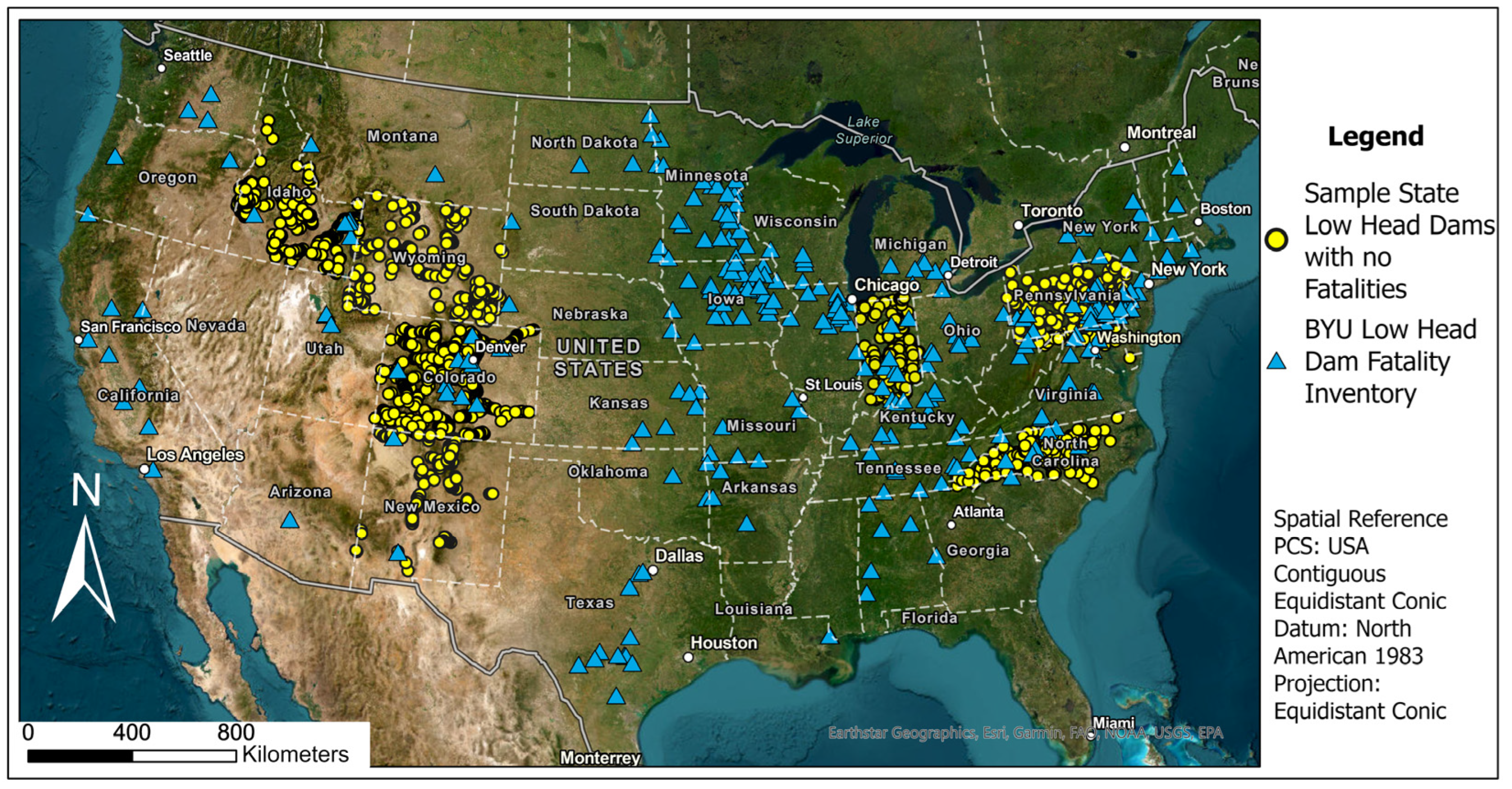
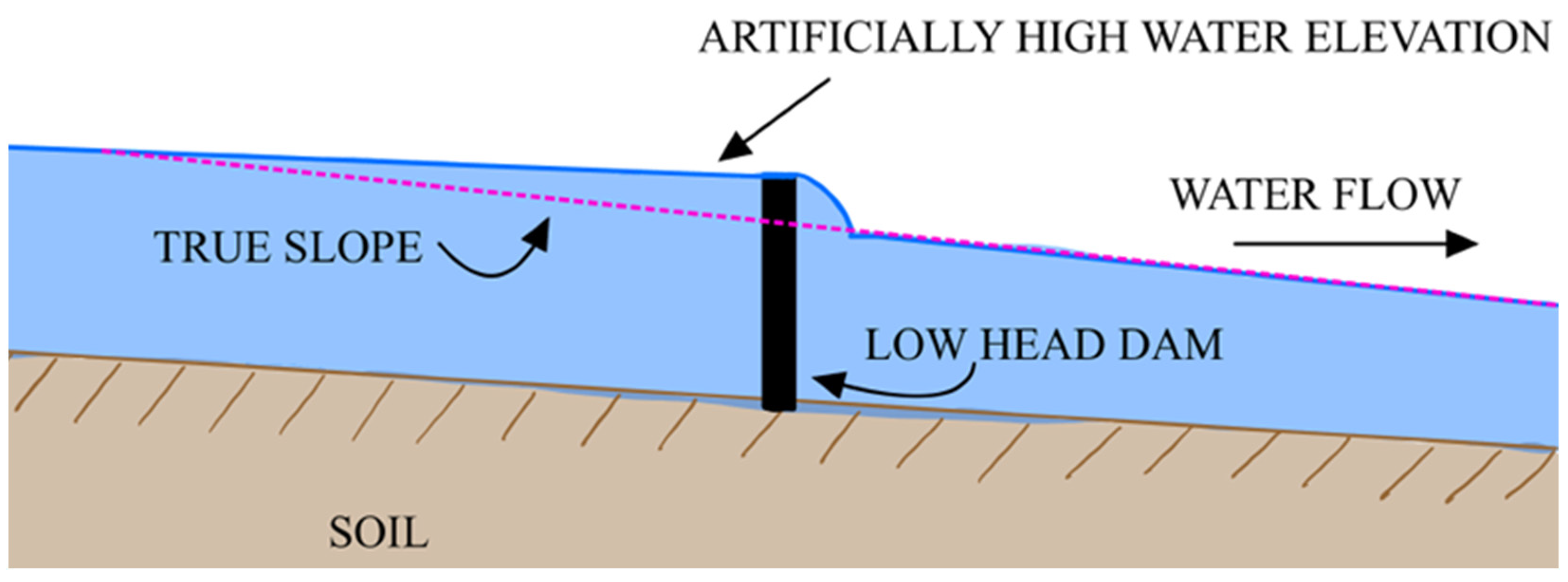
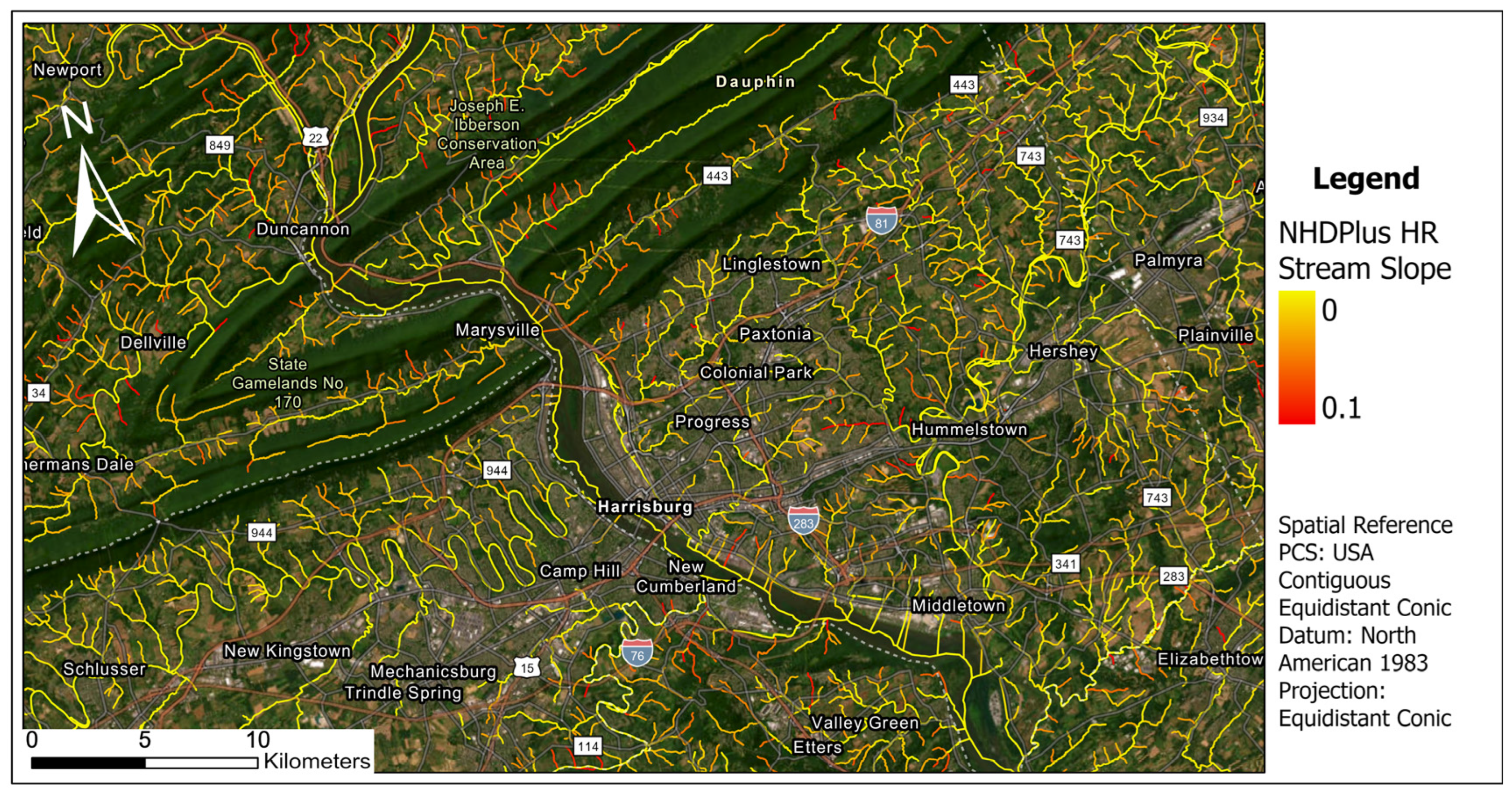
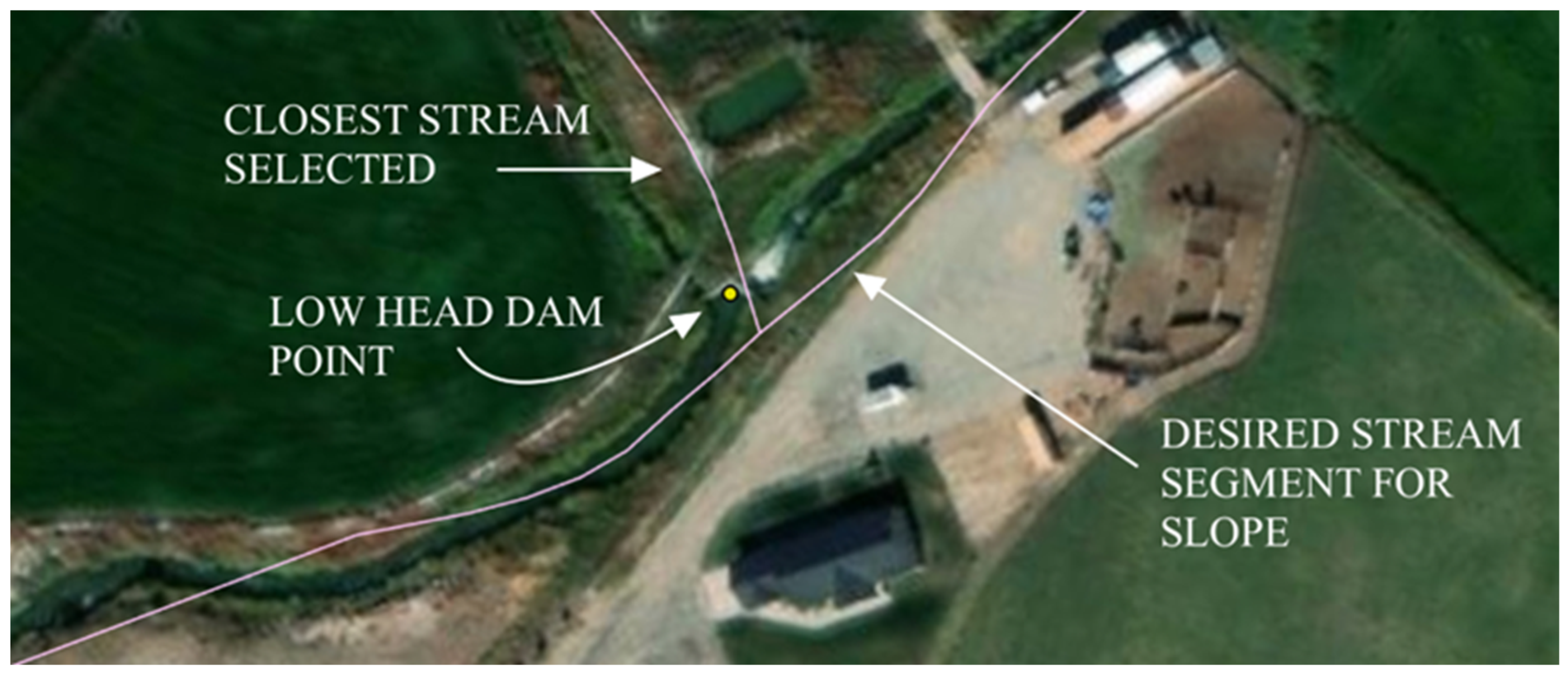
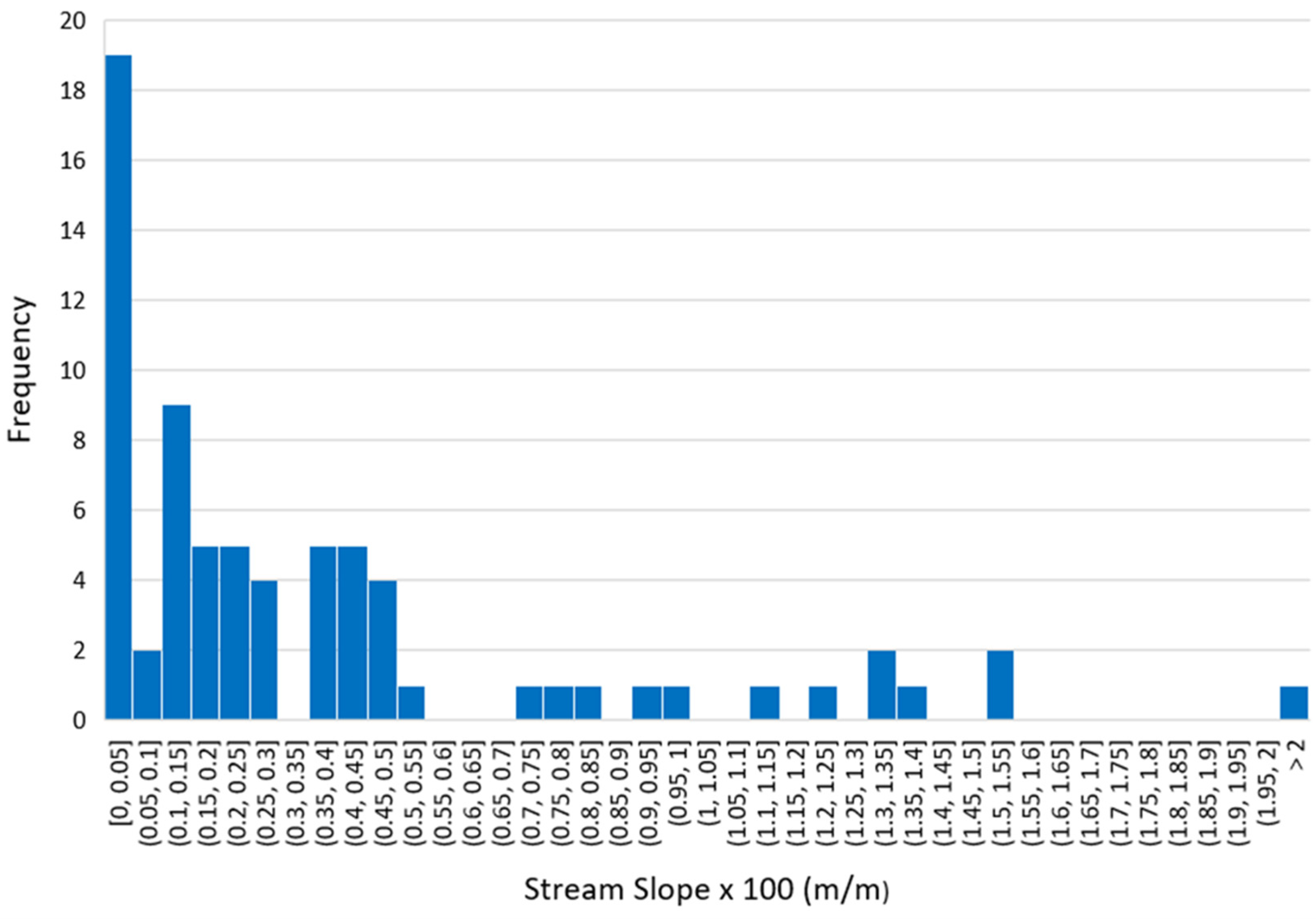
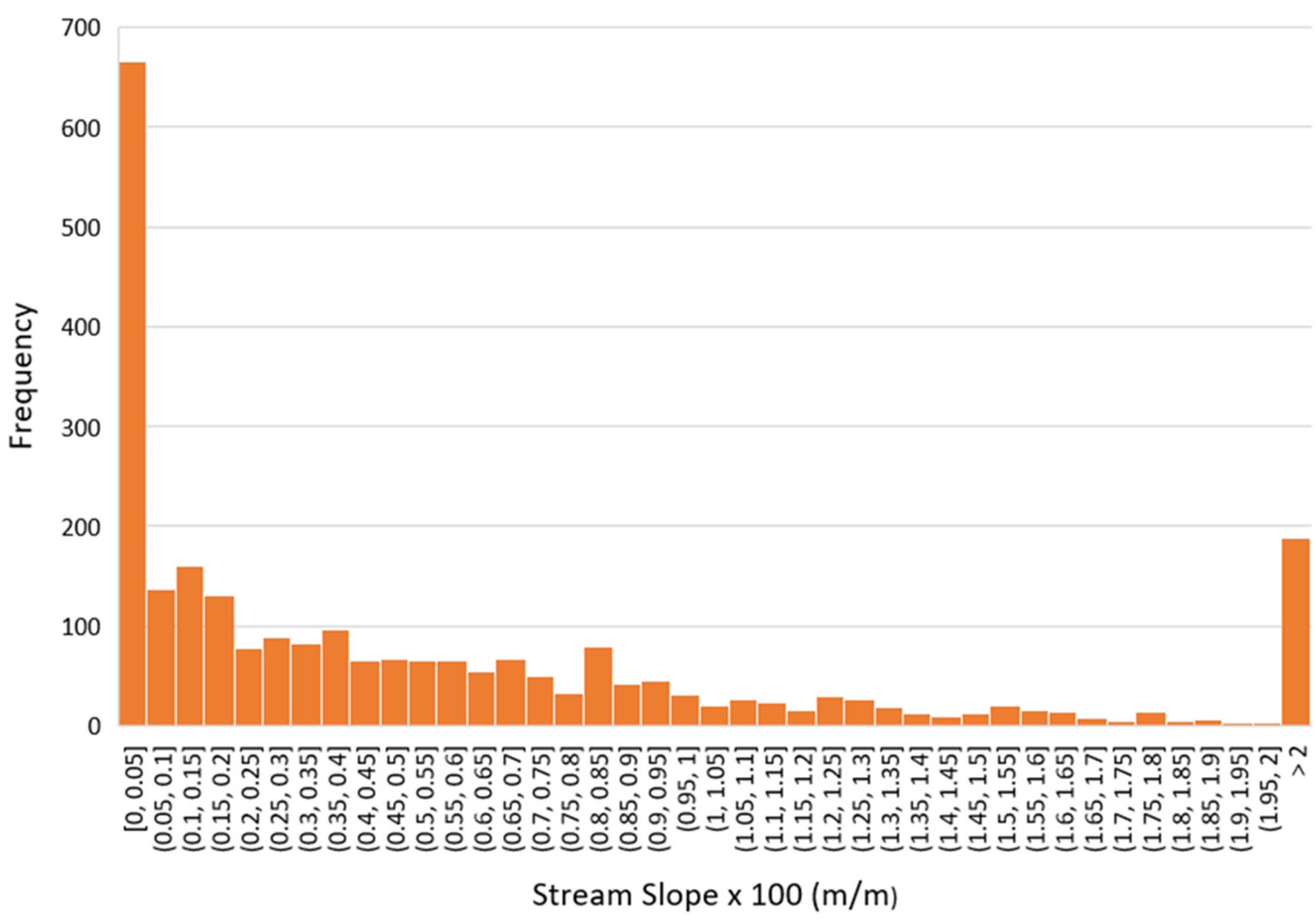
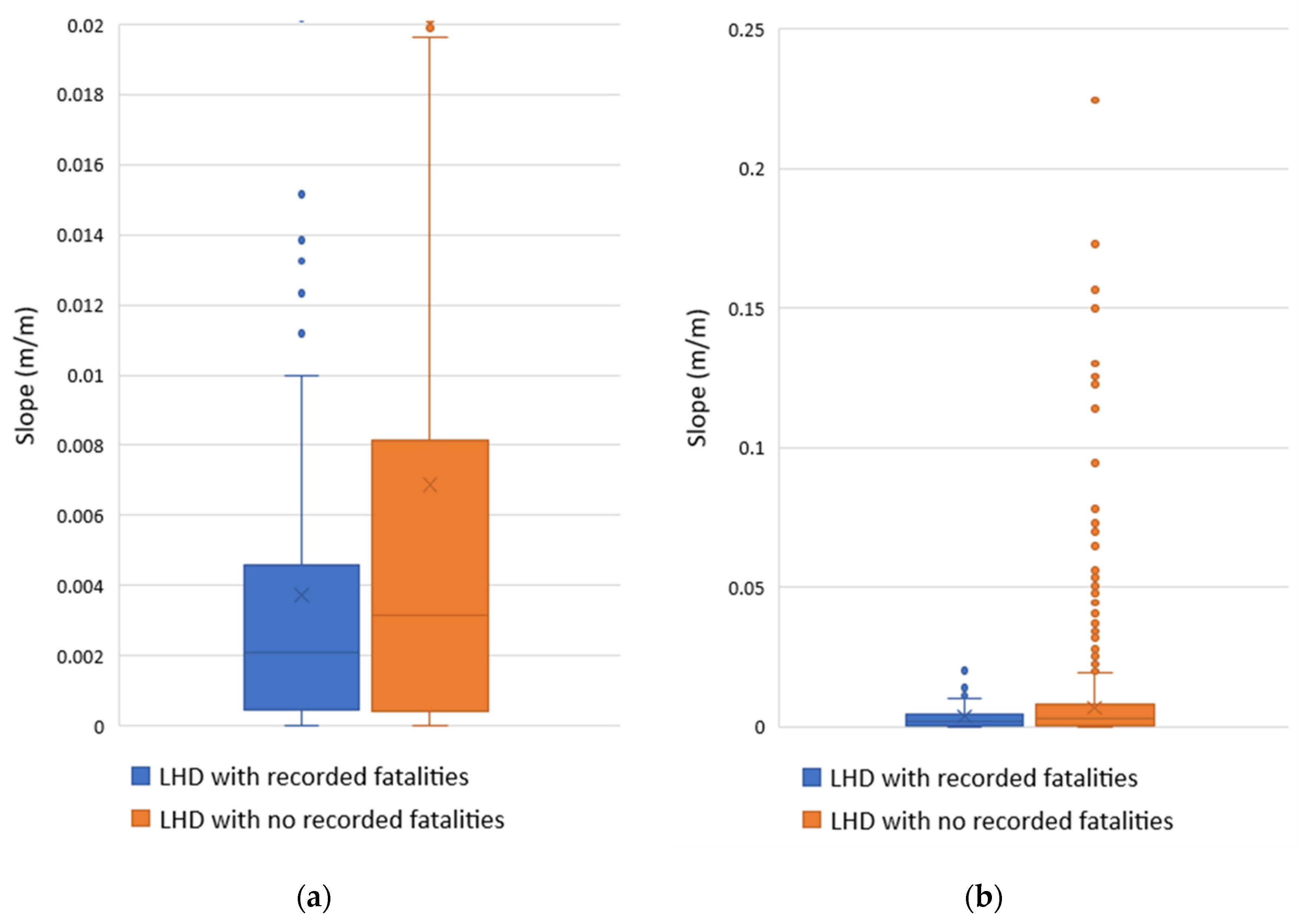
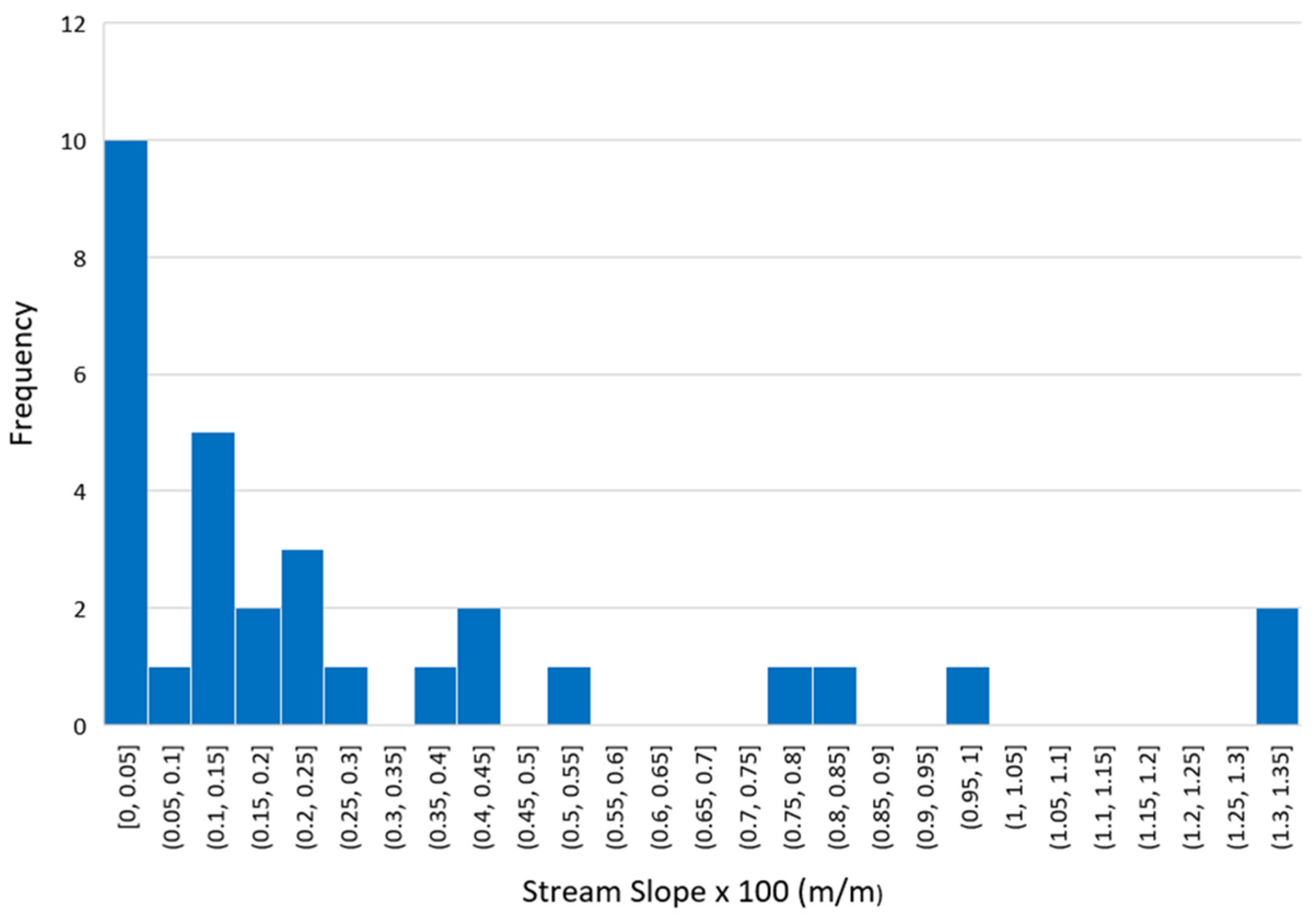
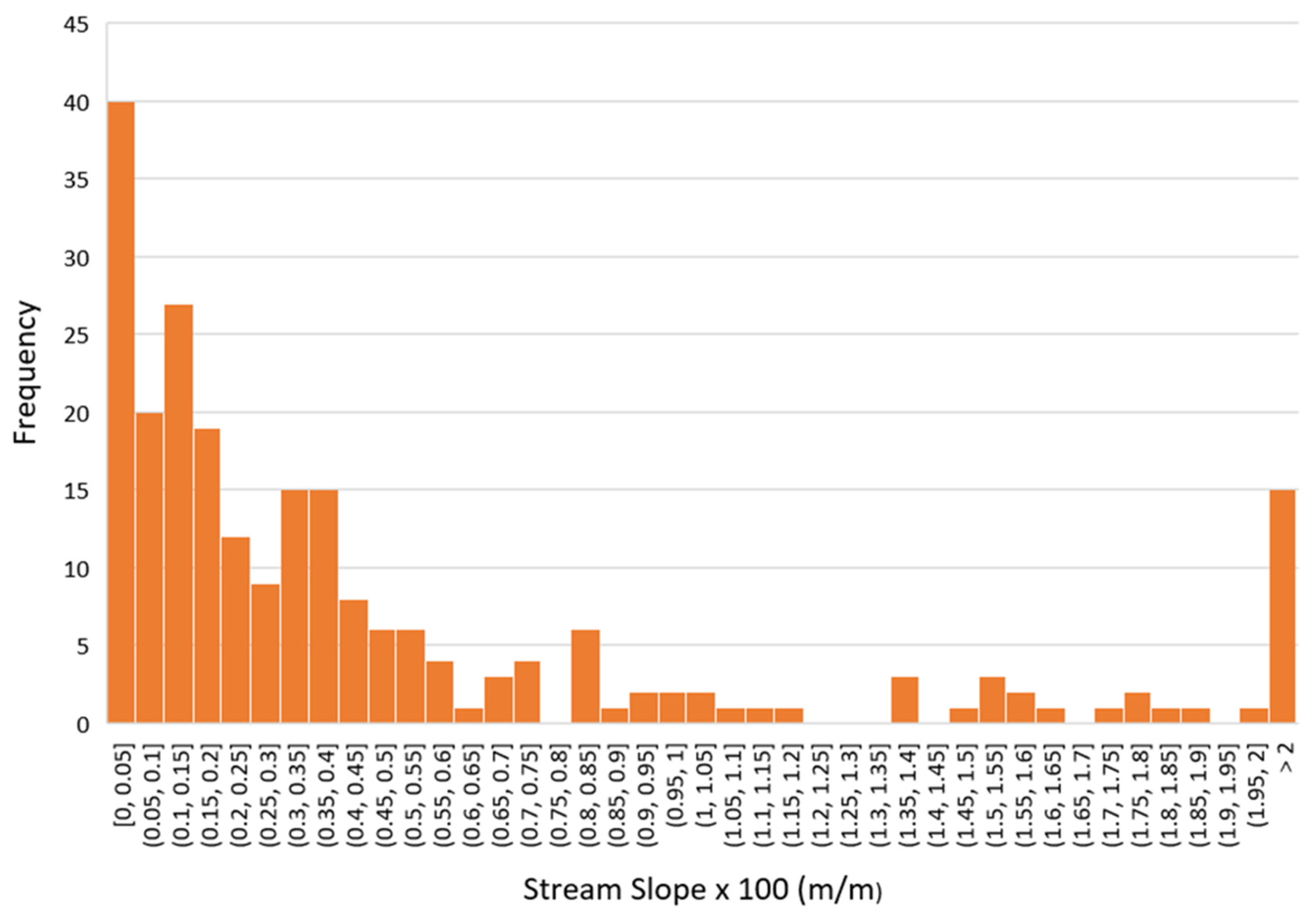
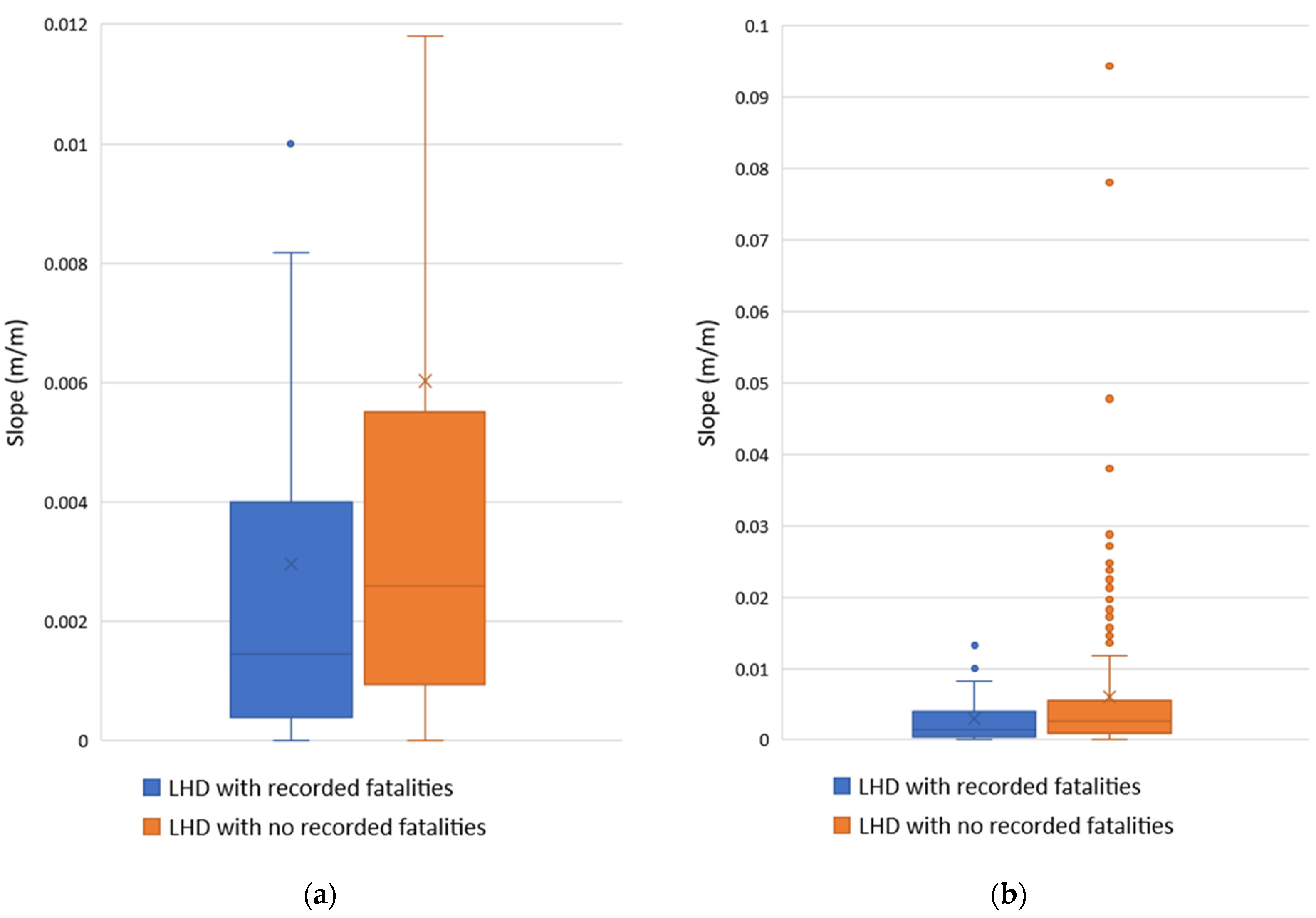
| State | p-Value 1 | n for LHDs with Fatalities | n for LHDs with No Recorded Fatalities |
|---|---|---|---|
| PA | 0.08 | 31 | 236 |
| CO | 0.45 | 12 | 1082 |
| IN | 0.44 | 12 | 148 |
| NC | 0.65 | 5 | 170 |
| MD | 0.37 | 5 | 94 |
| ID | 0.10 | 5 | 562 |
| NM | 0.67 | 2 | 289 |
| All Sample States | 0.21 | 72 | 2581 |
Disclaimer/Publisher’s Note: The statements, opinions and data contained in all publications are solely those of the individual author(s) and contributor(s) and not of MDPI and/or the editor(s). MDPI and/or the editor(s) disclaim responsibility for any injury to people or property resulting from any ideas, methods, instructions or products referred to in the content. |
© 2023 by the authors. Licensee MDPI, Basel, Switzerland. This article is an open access article distributed under the terms and conditions of the Creative Commons Attribution (CC BY) license (https://creativecommons.org/licenses/by/4.0/).
Share and Cite
Poff, J.W.; Hotchkiss, R.H. Stream Slope as an Indicator for Drowning Potential at Low Head Dams. Water 2023, 15, 512. https://doi.org/10.3390/w15030512
Poff JW, Hotchkiss RH. Stream Slope as an Indicator for Drowning Potential at Low Head Dams. Water. 2023; 15(3):512. https://doi.org/10.3390/w15030512
Chicago/Turabian StylePoff, Jason W., and Rollin H. Hotchkiss. 2023. "Stream Slope as an Indicator for Drowning Potential at Low Head Dams" Water 15, no. 3: 512. https://doi.org/10.3390/w15030512
APA StylePoff, J. W., & Hotchkiss, R. H. (2023). Stream Slope as an Indicator for Drowning Potential at Low Head Dams. Water, 15(3), 512. https://doi.org/10.3390/w15030512







